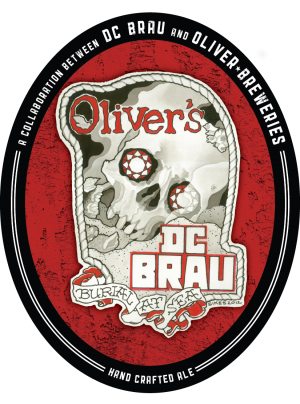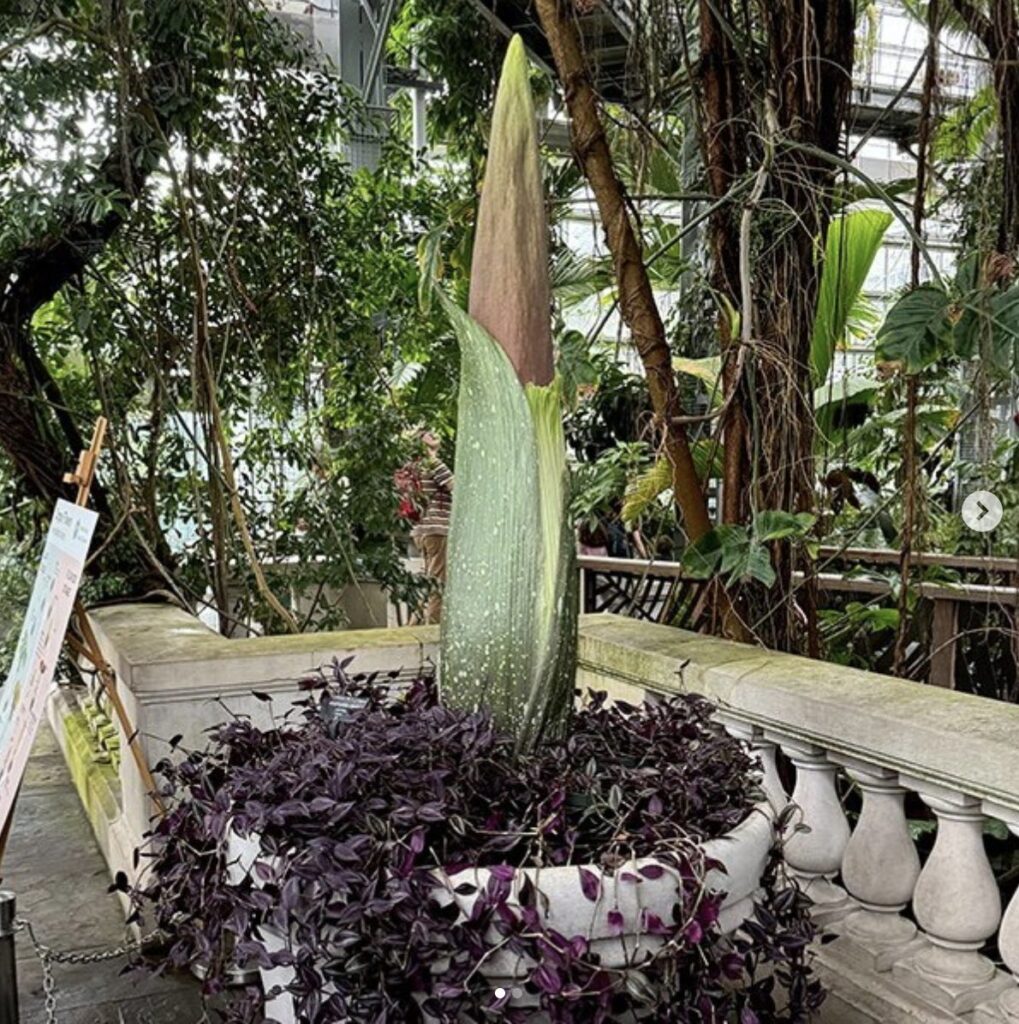
Tim Prendergast is a Certified Cicerone® and the Assistant Beer Director and Cellarman at Meridian Pint.
I’ve said it in this space before and I’ll say it again right now; when it comes to beer, I can be a bit of an anglophile. I have a soft spot in my heart for British beer, particularly the low-alcohol “session beers” that often display great complexity at very low levels of alcohol. Which is why I was so excited when I learned that the boys at DC Brau were collaborating with Stephen Jones of Oliver Ales in Baltimore to brew a low-alcohol British-style beer. The beer would be called “Burial at Sea” and would be a mild ale. Mild ale, commonly known simply as mild is a low strength (3-4%), malt driven ale that is low in hop flavor and bitterness that showcases a complex interplay of malt and yeast flavors. In England these beers are usually served on cask and because of their low strength they are often sought out by those looking to have many pints in a night. It’s a style that is rarely brewed in the U.S. and one that I love, I think it’s a shame that we don’t see it more often.
Originally, I wanted to use this opportunity to write about the history of mild ale and it’s journey in England from a 6% alternative to porter in the 1860’s, through its decline in strength throughout the 20th century, and all the way to its more recent image as a drink for flat cap-wearing old men in dark pubs. I quickly realized that was probably going to bore almost everybody but myself. In an effort to spare you minutiae ridden brewing history, I decided to scrap that plan and just write about the beer itself.
“Burial at Sea” is a beer that blends the American and British brewing traditions that DC Brau and Oliver Ale represent so well. The malt is British, as well as the hops which are Fuggle and Challenger, but the yeast used is a classic American strain. This decision to use American yeast was a big one. British ale yeast is known for the fruity and sometimes butterscotchy flavors that it produces, as well as it’s ability to amplify complex malt flavors. American ale yeast on the other hand, is known for it’s clean flavor profile that allows malt and hops to speak for themselves. The decision to use American ale yeast is one that would definitely have a sizeable impact on the the flavor profile of the style at hand.
Continues after the jump.
Even more interesting than the decision to use American ale yeast was the decision to produce two batches of the beer, one at each brewery, the first in Baltimore at Oliver Ales, the second in DC at DC Brau. The recipe would be identical but there would be two seemingly subtle differences, two of them reflecting the distinct brewing tradition of each brewery. The first was the water, each brewery would be using their own municipal water supply. In the 19th century the Ph level and mineral content of brewing water had a major affect on the character of beer being produced. Nowadays most brewers filter their water and make mineral and Ph adjustments according to the style of beer being brewed, so the affect is often minimal. The second was finings, an ingredient added in brewing that helps yeast drop to the bottom of the fermenter, increasing the clarity in beer. The Oliver version would use finings which is the norm in the British brewing tradition, the DC Brau version would not.
Now the recipe was nearly identical but the fermentation at each brewery would be very different. Oliver uses the traditional British method of open fermentation. In this method the fermenters are open at the top exposing the fermenting beer to ambient air. The fermenters essentially look like big 6 foot tall stainless steel buckets with no lid on top. Advocates of this system argue that it increases ester pruduction (fruity flavors) by yeast, and Steve Jones at Oliver says he can’t imagine brewing any other way.
At DC Brau, they have shiny new fermenters that are known as closed fermenters. They are about 20 feet tall and completely seal off the beer from the ambient air. This fermentation gives a slightly cleaner yeast flavor to the beer and protects the beer from potential cross-contamination from other yeast strains present at the brewery. I was eager to see how these differences would affect the beer.
I sat down excitedly last night and got ready to taste the two different versions of “Burial at Sea” As I poured the beers that shared a nearly identical recipe I was immediately struck by the difference in appearance. Obviously the finings at Oliver had done their job as the beer was a brilliantly clear dark-ruby color, while the Brau version was medium to dark-brown and cloudy from yeast still in suspension in the beer. This was an obvious difference, but one I expected.
I tasted the Brau version first. It had an aroma that was dominated by malt; bready, biscuity, toffee-like, and lightly chocolaty malt. There was a background note of fruitiness from Fuggles, the classic English hop used in the beer. The taste was similar to the aroma, lots of bready, biscuity, toasty malt. At the back of my mouth I got a lingering taste of spice, chocolate and dark fruit that was extremely pleasant. I barely noticed any lack of British yeast character, the beer didn’t need it, it was refreshing, complex, and showcased great malt flavor. It tasted like a good mild to me.
As I moved on to the Oliver version, I was expecting something very similar. I was surprised when my nose was greeted with something that I describe as the “house character” of Oliver Ales. There was a prominent fruity and tea-like hop aroma as well as the distinct aroma of butterscotch. I found that Oliver house character in the taste as well. There were butterscotch, caramel, and toffeelike malt flavors as well as a pronounced hop character not present in the Brau version, and I was surprised to find that there was very little of the bready, biscuity and chocolaty malt flavors that defined the beer brewed in DC.
I found something to love in both versions of “Burial at Sea” but what I really enjoyed was the opportunity to try both versions side-by-side so I could to tease out the differences in each brewery that produced the different flavors in each beer. I’ve discovered that oftentimes it is not just the taste of a beer that is so enjoyable but also the whole experience of tasting that beer. One of the perks of living in a city like DC with a thriving beer culture is getting to sample beers like “Burial at Sea” that can stimulate your mind as well as your palate and I hope we see many more projects just like this one.
Recent Stories

Photo by Clif Burns Ed. Note: If this was you, please email [email protected] so I can put you in touch with OP. “Dear PoPville, Hey – you stopped me while…

Unlike our competitors, Well-Paid Maids doesn’t clean your home with harsh chemicals. Instead, we handpick cleaning products rated “safest” by the Environmental Working Group, the leading rating organization regarding product safety.
The reason is threefold.
First, using safe cleaning products ensures toxic chemicals won’t leak into waterways or harm wildlife if disposed of improperly.

Looking for something campy, ridiculous and totally fun!? Then pitch your tents and grab your pokers and come to DC’s ONLY Drag Brunch Bingo hosted by Tara Hoot at Whitlow’s! Tickets are only $10 and you can add bottomless drinks and tasty entrees. This month we’re featuring performances by the amazing Venus Valhalla and Mari Con Carne!
Get your tickets and come celebrate the fact that the rapture didn’t happen during the eclipse, darlings! We can’t wait to see you on Sunday, April 21 at 12:30!
Frank’s Favorites
Come celebrate and bid farewell to Frank Albinder in his final concert as Music Director of the Washington Men’s Camerata featuring a special program of his most cherished pieces for men’s chorus with works by Ron Jeffers, Peter Schickele, Amy
Cinco de Mayo Weekend @ Bryant Street Market
SAVE THE DATE for Northeast DC’s favorite Cinco de Mayo celebration at Bryant Street NE and Bryant Street Market!
Cinco de Mayo Weekend Line up:
Friday, May 3:






